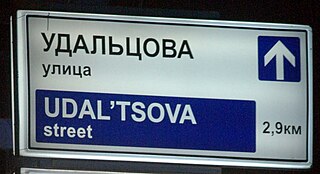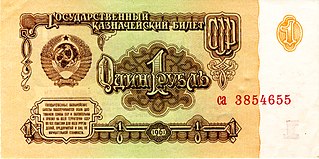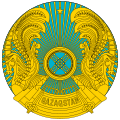
Nikita Sergeyevich Khrushchev was a Soviet statesman who led the Soviet Union during part of the Cold War as the First Secretary of the Communist Party of the Soviet Union from 1953 to 1964, and as Chairman of the Council of Ministers, or Premier, from 1958 to 1964. Khrushchev was responsible for the de-Stalinization of the Soviet Union, for backing the progress of the early Soviet space program, and for several relatively liberal reforms in areas of domestic policy. Khrushchev's party colleagues removed him from power in 1964, replacing him with Leonid Brezhnev as First Secretary and Alexei Kosygin as Premier.

In the USSR, during the eleven-year period from the death of Joseph Stalin (1953) to the political ouster of Nikita Khrushchev (1964), the national politics were dominated by the Cold War, the ideological U.S.–USSR struggle for the planetary domination of their respective socio-economic systems, and the defense of hegemonic spheres of influence. Nonetheless, since the mid-1950s, despite the Communist Party of the Soviet Union (CPSU) having disowned Stalinism, the political culture of Stalinism—a very powerful General Secretary of the CPSU—remained in place, albeit weakened.

Dinmukhamed Akhmetuly "Dimash" Kunaev was a Kazakh Soviet communist politician.
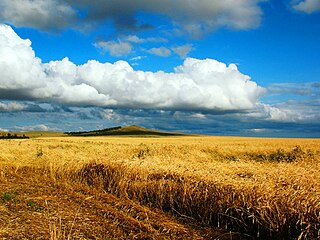
Agriculture in Kazakhstan remains a small scale sector of Kazakhstan's economy. Agriculture's contribution to the GDP is under 10% - it was recorded as 6.7%, and as occupying only 20% of labor. At the same time, more than 70% of its land is occupied in crops and animal husbandry. Compared to North America, a relatively small percentage of land is used for crops, with the percentage being higher in the north of the country. 70% of the agricultural land is permanent pastureland.

Agriculture in Mongolia constitutes over 10% of Mongolia's annual Gross domestic product and employs one-third of the labor force. However, the high altitude, extreme fluctuation in temperature, long winters, and low precipitation provides limited potential for agricultural development. The growing season is only 95 – 110 days. Because of Mongolia's harsh climate, it is unsuited to most cultivation. Only 1% of the arable land in Mongolia is cultivated with crops, amounting to 1,322,000 hectares in 1998. The agriculture sector therefore remains heavily focused on nomadic animal husbandry with 75% of the land allocated to pasture, and cropping only employing 3% of the population. Crops produced in Mongolia include corn, wheat, barley, and potatoes. Animals raised commercially in Mongolia include sheep, goats, cattle, horses, camels, and pigs. They are raised primarily for their meat, although goats are valued for their hair which can be used to produce cashmere.
Agriculture in Lithuania dates to the Neolithic period, about 3,000 to 1,000 BC. It has been one of Lithuania's most important occupations for many centuries.

In 4,000 years, China has been a nation of farmers. By the time the People's Republic of China was established in 1949, virtually all arable land was under cultivation; irrigation and drainage systems constructed centuries earlier and intensive farming practices already produced relatively high yields. But little prime virgin land was available to support population growth and economic development. However, after a decline in production as a result of the Great Leap Forward (1958–60), agricultural reforms implemented in the 1980s increased yields and promised even greater future production from existing cultivated land.

Maksim Zakharovich Saburov was a Soviet engineer, economist and politician, three-time Chairman of Gosplan and later First Deputy Premier of the Soviet Union. He was involved in the Anti-Party Group's attempt to displace Nikita Khrushchev in 1957.

Agriculture is the traditional mainstay of the Cambodian economy. Agriculture accounted for 90 percent of GDP in 1985 and employed approximately 80 percent of the work force. Rice is the principal product.
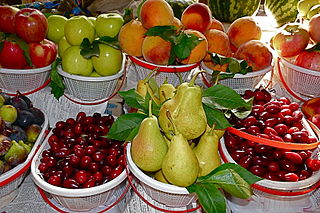
Armenia has 2.1 million hectares of agricultural land, 72% of the country's land area. Most of this, however, is mountain pastures, and cultivable land is 480,000 hectares, or 16% of the country's area. In 2006, 46% of the work force was employed in agriculture, and agriculture contributed 21% of the country's GDP. In 1991 Armenia imported about 65 percent of its food.

Georgia’s climate and soil have made agriculture one of its most productive economic sectors; the 18 percent of Georgian land that is arable provided 32 percent of the republic's NMP in 1990. In the Soviet period, swampy areas in the west were drained and arid regions in the east were salvaged by a complex irrigation system, allowing Georgian agriculture to expand production tenfold between 1918 and 1980. Production was hindered in the Soviet period, however, by the misallocation of agricultural land such as the assignment of prime grain fields to tea cultivation and excessive specialization. Georgia’s emphasis on labor-intensive crops such as tea and grapes kept the rural work force at an unsatisfactory level of productivity. Some 25 percent of the Georgian work force was engaged in agriculture in 1990; 37 percent had been so engaged in 1970. In the spring of 1993, sowing of spring crops was reduced by onethird on state land and by a substantial amount on private land as well because of fuel and equipment shortages. For the first half of 1993, overall agricultural production was 35 percent less than for the same period of 1992.

Throughout its history, agriculture in Paraguay has been the mainstay of the economy. This trend has continued today and in the late 1980s the agricultural sector generally accounted for 48 percent of the nation's employment, 23 percent of GDP, and 98 percent of export earnings. The sector comprised a strong food and cash crop base, a large livestock subsector including cattle ranching and beef production, and a vibrant timber industry.
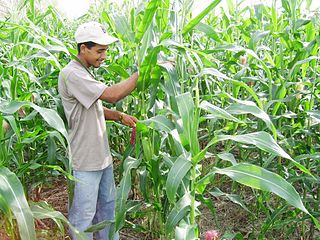
Agriculture in Panama is an important sector of the Panamanian economy. Major agricultural products include bananas, cocoa beans, coffee, coconuts, timber, beef, chicken, shrimp, corn, potatoes, rice, soybeans, and sugar cane.
Prior to World War II, agriculture in Bulgaria was the leading sector in the Bulgarian economy. In 1939, agriculture contributed 65 percent of Net material product (NMP), and four out of every five Bulgarians were employed in agriculture. The importance and organization of Bulgarian agriculture changed drastically after the war, however. By 1958, the Bulgarian Communist Party (BCP) had collectivized a high percentage of Bulgarian farms; in the next three decades, the state used various forms of organization to improve productivity, but none succeeded. Meanwhile, private plots remained productive and often alleviated agricultural shortages during the Todor Zhivkov era.

Agriculture in Spain is important to the national economy.
In 1990, Latvia had 2,567,000 hectares of agricultural land—32 percent less than in 1935. More than 1 million hectares of agricultural land, much of it abandoned, were converted to forest under Soviet rule. Of its nearly 1.7 million hectares of arable land, about one-half was used for growing fodder crops: more than 40 percent for grain, 5 percent for potatoes, and approximately 2 percent for flax and sugar beets together.
Despite six years of crisis in Syria, agriculture remains a key part of the economy. The sector still accounts for an estimated 26 percent of gross domestic product (GDP) and represents a critical safety net for the 6.7 million Syrians – including those internally displaced - who still remain in rural areas. However, agriculture and the livelihoods that depend on it have suffered massive loss. Today, food production is at a record low and around half the population remaining in Syria are unable to meet their daily food needs.

The Medal "For the Development of Virgin Lands" was a civilian award of the Soviet Union established on October 26, 1956 by Decree of the Presidium of the Supreme Soviet of the USSR to recognise individuals who displayed superior performance in labour over two years connected with the Virgin Lands Campaign started in 1954 by Nikita Khrushchev to cultivate 36,000,000 hectares of previously uncultivated lands in Kazakhstan, Siberia, the Urals, the Volga area and the northern Caucasus, it was intended to serve as an example for good achievements in the performance of civic duties.

Georgy Maximilianovich Malenkov was a Soviet politician who briefly succeeded Joseph Stalin as the leader of the Soviet Union. However, at the insistence of the rest of the Presidium, he relinquished control over the party in exchange for remaining first among equals as the country's Premier. Subsequently, Malenkov became embroiled in a power struggle ultimately culminating in his removal from the premiership in 1955 and the Presidium in 1957.


